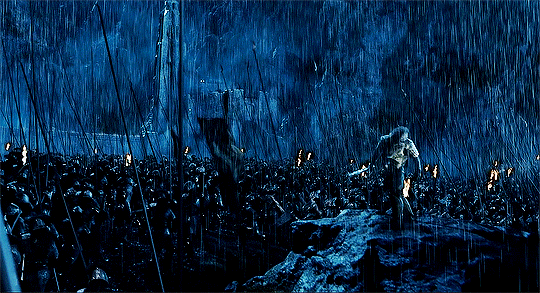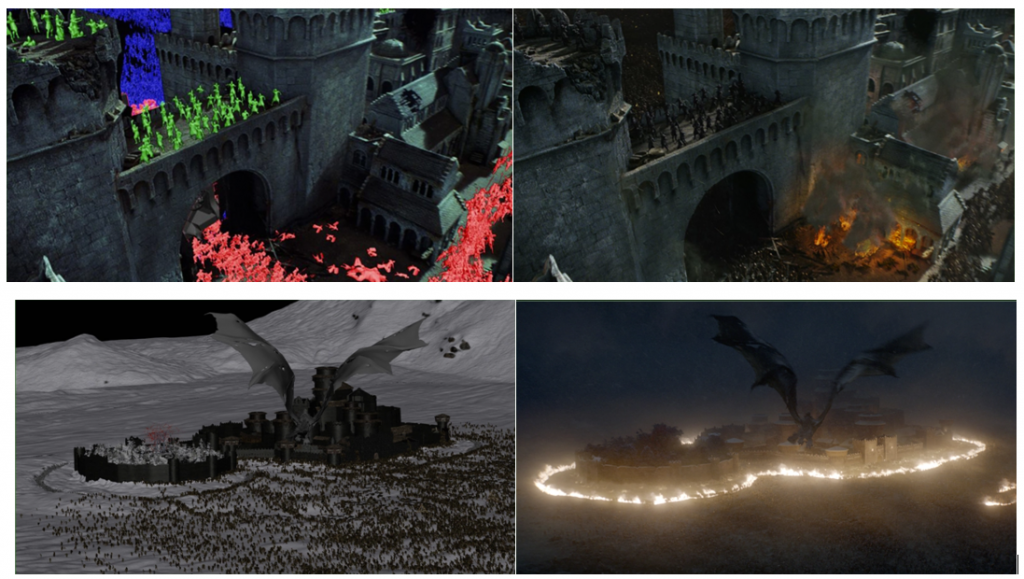
This bloody scene is from The Lord of the Rings: The Two Towers Helm’s Deep battle. One of the first on-screen battles to use Massive, a piece of software created especially for the Lord of the Rings series, was this one. Its function is to build computerized armies that employ artificial intelligence (AI) to simulate terrifyingly large-scale real battles.
In the past, films like Star Wars transformed special effects, and companies like Pixar influenced how computers were used to make animations. The way the contemporary film industry functions has changed thanks to extensive software created by engineer Stephen Regelous. The software contributed to improving the epic battles’ visual effects, which viewers have come to anticipate on the big screen. Regelous himself received the Academy Award for Scientific and Technical Achievement for this work.
The final season of Game of Thrones and the blockbuster Avengers: Endgame both featured iconic fight scenes that Massive helped create and perfect over the past few years.
The final season of Game of Thrones and the blockbuster Avengers: Endgame both featured iconic fight scenes that Massive helped create and perfect over the past few years

Fuzzy logic – the backbone machanism
If traditional logic states that something is true or false, then fuzzy logic allows for possibilities in between. In Massive’s case, this implied that, depending on the reason that had been established to govern the interaction of figures, there would be various ways in which an Orc and an Elf could engage in combat if one of them crossed paths. There will never be a repetition of any interaction on the battlefield after the software multiplies it by thousands.
According to Regelous, using fuzzy logic offers not only specific interactions but also more usage flexibility when compared to neural networks. Typically, when people talk about artificial intelligence, they refer to neural networks or “artificial neural networks.” A simple example to comprehend is an object identification system, which necessitates the presentation of thousands of photos of various objects for the system to identify the thing. It might take months for the neural network to teach the AI characters to become more hostile, for instance, if the screen had decided that a bunch of orcs needed to be more aggressive in a scene. However, Massive enables those adjustments to be performed fast.
The future of Massive
Massive 9.0, a new software version, is anticipated to be launched with features like improved compatibility with other programs like Autodesk’s Maya. Regelous is still committed to moving Massive forward despite making hundreds of films and TV episodes and winning a few Emmys and Oscars because it has got off to a good start.
References:
How “Lord of the Rings” Used AI to Change Big-Screen Battles Forever—CNET. (n.d.). Retrieved September 24, 2022, from https://www.cnet.com/culture/entertainment/features/how-lord-of-the-rings-used-ai-to-change-big-screen-battles-forever/
Multiple_Agent_Simulation_System_in_a_Virtual_Environment.pdf. (n.d.). Retrieved September 24, 2022, from http://people.ucalgary.ca/~far/Lectures/SENG697/PDF/tutorials/2002/Multiple_Agent_Simulation_System_in_a_Virtual_Environment.pdf
Thompson, K. M. (2006). Scale, Spectacle and Movement: Massive Software and Digital Special Effects in The Lord of The Rings (pp. 283–299). Brill. https://doi.org/10.1163/9789401201513_021

